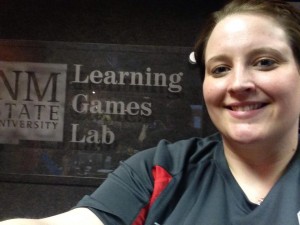 It is the flurry of activity known as project judging week here at the Extension Office. We have been gathering rubrics, checking assignments, and dusting off the ribbons for this year’s still project judging. Youth have enrolled in over 500 projects such as sewing, cooking, robots, scrapbooking, and bottle rockets. These projects are all competing for awards at the county level where the best of the best will represent Van Wert County at the Ohio State Fair! Youth who participate in 4-H judging are given a taste of real world experience that is second to none. It helps them learn to communicate their experiences, thoughts, and learning with another person. While the ribbons fade, and the county fair will come to a close in September, those experiences will remain with the youth. Project judging is a good way to allow youth to experience job interviews before the time comes, and allows them to gain a level of comfort in the type of response and conversation they might have during that kind of an interview. They get to show off their talents with their project, and explain their new found passion and knowledge to caring adults who want to hear about their adventure.
It is the flurry of activity known as project judging week here at the Extension Office. We have been gathering rubrics, checking assignments, and dusting off the ribbons for this year’s still project judging. Youth have enrolled in over 500 projects such as sewing, cooking, robots, scrapbooking, and bottle rockets. These projects are all competing for awards at the county level where the best of the best will represent Van Wert County at the Ohio State Fair! Youth who participate in 4-H judging are given a taste of real world experience that is second to none. It helps them learn to communicate their experiences, thoughts, and learning with another person. While the ribbons fade, and the county fair will come to a close in September, those experiences will remain with the youth. Project judging is a good way to allow youth to experience job interviews before the time comes, and allows them to gain a level of comfort in the type of response and conversation they might have during that kind of an interview. They get to show off their talents with their project, and explain their new found passion and knowledge to caring adults who want to hear about their adventure.
You are encouraged to dress up for the occasion and bring their best attitude to judging. They introduce themselves to the judge, and are given the opportunity to explain their project as an introduction, or dive right into skills type questions. Throughout their time with the judge, they will answer, explain, or even begin conversations that otherwise may not occur with adults outside of their family and close friends. 4-H brings trusted adults with expertise to youth with passions or interests in those areas.
Throughout the years I have been blessed to experience many judging events as a member, judge, and now as a 4-H professional. I have to admit, I miss the interactions with the 4-H members as they tell me fun stories, silly things that happened – or best yet, the brutal honesty that they learned as a result of the project. I am ready and excited to see the projects as they come in the door for judging, and hear the stories about how they came to be completed. From start to finish, a 4-H project is a family affair, and a learning experience for all of those involved. So, what is project judging all about? If I had my way, I would probably reword it to a fancy show and tell of sorts. Youth show and tell about their projects – and as a result we get to award them for their hard work and efforts.




